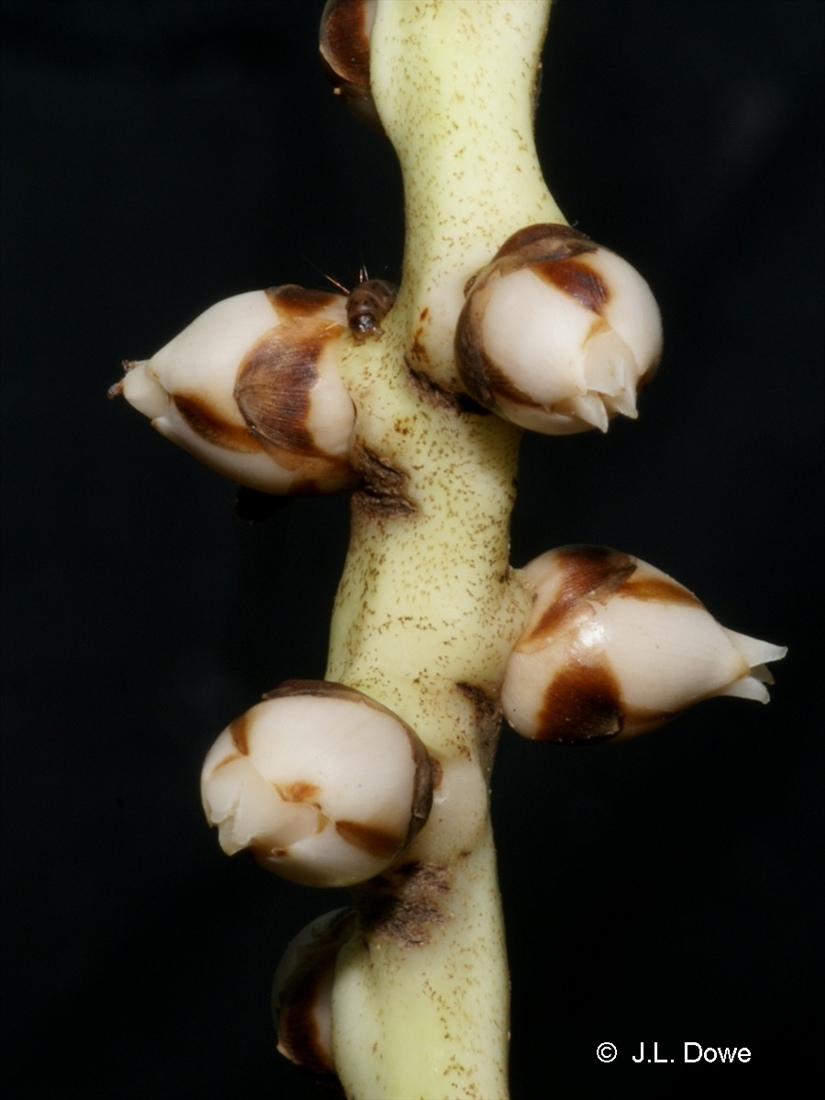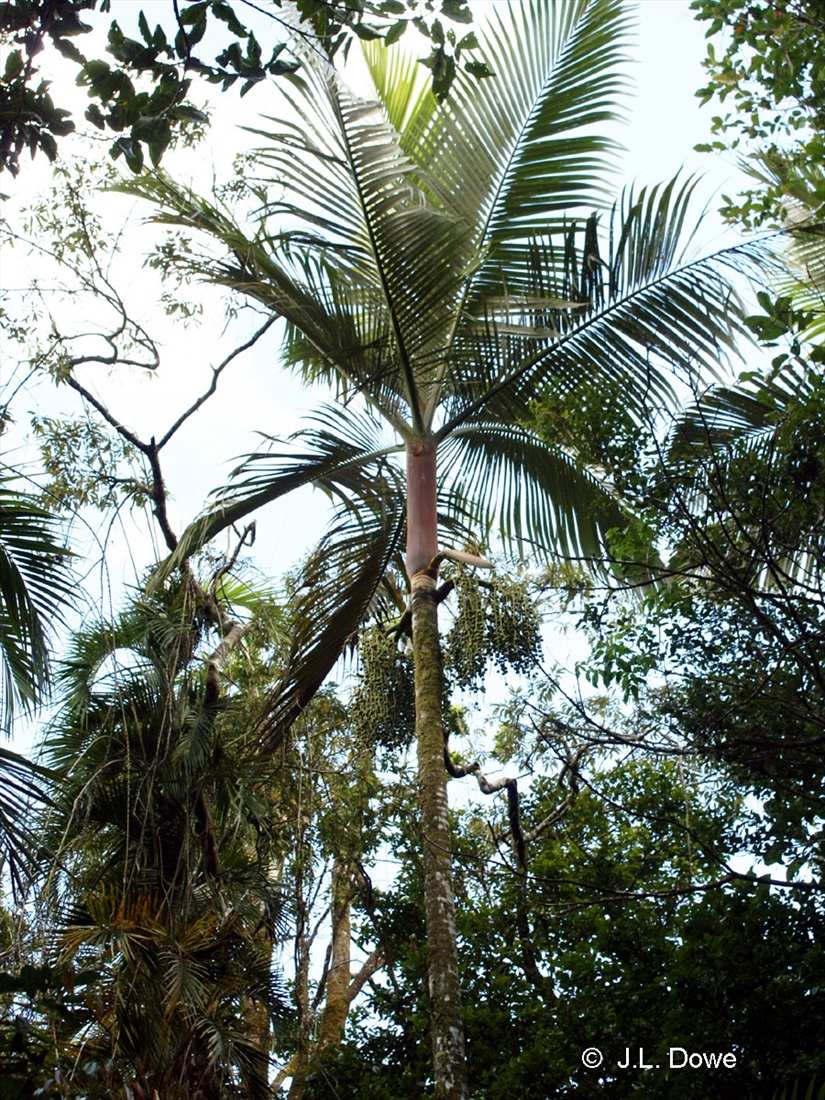Australian Tropical Rainforest Plants - Online edition
Archontophoenix purpurea Hodel & Dowe






Dowe, J.L. & Hodel, D.R. (1994) Austrobaileya 4(2): 238, fig. 1 C1-C3. Type: Queensland. Cook District: Mt Lewis, montane rainforest, amongst granite boulders, 1200 m altitude, 17 Apr 1993, M. Ferrero 101 (holo: BRI).
Purple Alexandra Palm
Palm to 25 m tall. Trunk to 45 cm DBH, expanded at the base, smooth in upper part becoming deeply fissuered with age; leaf scars slightly raised; internodes up to 10 cm wide.
Leaves 7-15 and 4-6 m long held flat or with a moderate lateral twist, 55-85 pinnae per side; new leaves frequently with a bronze tinge. Crownshaft 105-150 cm long shallowly densely longitudinally striate, dark blue-grey to blue-green covered with a dense glaucous bloom and flecked with deciduous reddish/mahogany scales resulting in the plum or purple colour, glossy coppery-brown adaxially. Petiole to 40 x 12 cm narrowing to 1.5 cm at the rachis, convex below with a light coloured band extending to the sheath, concave above with central flat ridge to 3 mm high. Rachis up to 4 m long becomong sharply ridged above in the front part, light green adaxially and covered with silvery scales throughout abaxially. Pinnae to 105 x 7.5 cm, rigid, glossy light green adaxially, with persistent silvery scales abaxially. Midrib prominent with up to 10 secondary ribs on abaxial surface.
Inflorescence 50-135 x 60-65 cm, axes light green becoming dark green. Prophyll to 140 x 25 cm, glabrous or covered with reddish-brown scales. Peduncular bract attached 5 cm above prophyll, 70-78 x 9-11 cm, glabrous and fibrous. Third bract 10-11 x 2-2.3 cm, acuminate. Peduncle 20-25 x 5.5-9(-15) cm wide, with scattered brown scales. Rachis 60-65 cm long, angular in lower portion. Rachillae up to 111 per inflorescence and up to 85 cm long. Triads borne on basal - of rachillae with the paired staminate flowers distally.Flowers cream fused green. Floral bracts prominent, sharp and angular. Staminate flowers 6-7 x 15-17. Petals 8-11 x 3-5 mm, covered in small brown scales especially on inner surface. Stamens 20-35 and up to 9 mm long, filaments curved, purple/brown with fine brown scales. Pistillode as long as stamens, with shallow longitudinal ridges, with a broad, lobed apex.Pistillate flowers globose, up to 6.5 mm long.
Fruit ovoid-ellipsoid-globose, 20-26 x 18-22 mm, red to crimson at maturity. Stigmatic remains prominent. Persistent calyx 3-9 mm long. Epicarp glossy, minutely pebbled. Mesocarp fleshy, fibres flat, to 2 mm wide, branched, overlaid and interspersed with thin straight fibres. Endocarp thin, crustaceous. Seed subglobose, to 23 x 18 mm, glossy light brown.
Features not available.
Occurs on Mt. Spurgeon, Mt. Lewis and Mt. Finnigan in NEQ. Altitudinal range from 400-1200 m. Grows in granitic soil along creeks with flowing water in rainforest and vineforest.
The fruit of this species is the largest in the genus (Dowe & Hodel 1994).
Distinguished by: undersurface of pinnae with silver-grey scales, ramenta (large irregular scales on midrib) present; perianth white-cream or cream-green, fruit ellipsoid-ovoid, 20-26 mm; mesocarp fruit fibres flat to 2 mm wide, branched and interspersed with thin fibres. Fibres compact (not free) when ripe.





